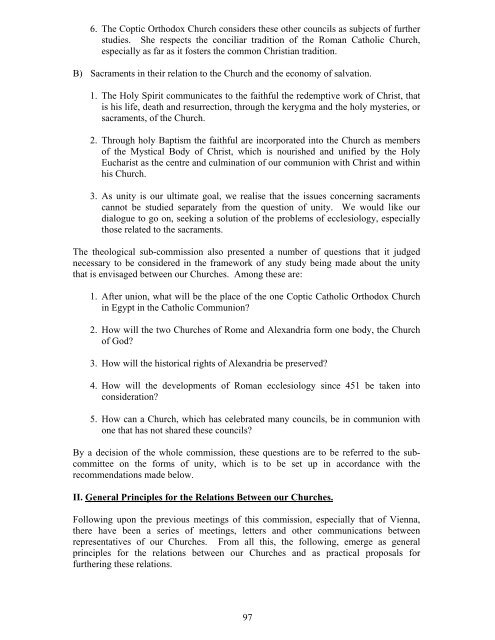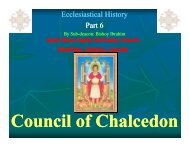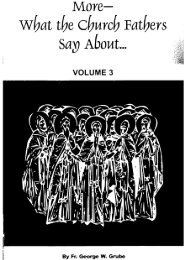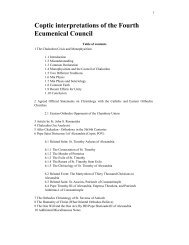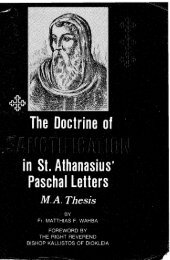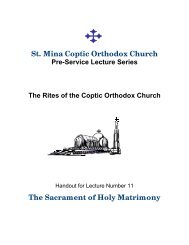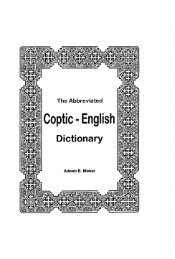Coptic Church & Ecumenical Movement - Saint Mina Coptic ...
Coptic Church & Ecumenical Movement - Saint Mina Coptic ...
Coptic Church & Ecumenical Movement - Saint Mina Coptic ...
You also want an ePaper? Increase the reach of your titles
YUMPU automatically turns print PDFs into web optimized ePapers that Google loves.
6. The <strong>Coptic</strong> Orthodox <strong>Church</strong> considers these other councils as subjects of further<br />
studies. She respects the conciliar tradition of the Roman Catholic <strong>Church</strong>,<br />
especially as far as it fosters the common Christian tradition.<br />
B) Sacraments in their relation to the <strong>Church</strong> and the economy of salvation.<br />
1. The Holy Spirit communicates to the faithful the redemptive work of Christ, that<br />
is his life, death and resurrection, through the kerygma and the holy mysteries, or<br />
sacraments, of the <strong>Church</strong>.<br />
2. Through holy Baptism the faithful are incorporated into the <strong>Church</strong> as members<br />
of the Mystical Body of Christ, which is nourished and unified by the Holy<br />
Eucharist as the centre and culmination of our communion with Christ and within<br />
his <strong>Church</strong>.<br />
3. As unity is our ultimate goal, we realise that the issues concerning sacraments<br />
cannot be studied separately from the question of unity. We would like our<br />
dialogue to go on, seeking a solution of the problems of ecclesiology, especially<br />
those related to the sacraments.<br />
The theological sub-commission also presented a number of questions that it judged<br />
necessary to be considered in the framework of any study being made about the unity<br />
that is envisaged between our <strong>Church</strong>es. Among these are:<br />
1. After union, what will be the place of the one <strong>Coptic</strong> Catholic Orthodox <strong>Church</strong><br />
in Egypt in the Catholic Communion?<br />
2. How will the two <strong>Church</strong>es of Rome and Alexandria form one body, the <strong>Church</strong><br />
of God?<br />
3. How will the historical rights of Alexandria be preserved?<br />
4. How will the developments of Roman ecclesiology since 451 be taken into<br />
consideration?<br />
5. How can a <strong>Church</strong>, which has celebrated many councils, be in communion with<br />
one that has not shared these councils?<br />
By a decision of the whole commission, these questions are to be referred to the subcommittee<br />
on the forms of unity, which is to be set up in accordance with the<br />
recommendations made below.<br />
II. General Principles for the Relations Between our <strong>Church</strong>es.<br />
Following upon the previous meetings of this commission, especially that of Vienna,<br />
there have been a series of meetings, letters and other communications between<br />
representatives of our <strong>Church</strong>es. From all this, the following, emerge as general<br />
principles for the relations between our <strong>Church</strong>es and as practical proposals for<br />
furthering these relations.<br />
97


